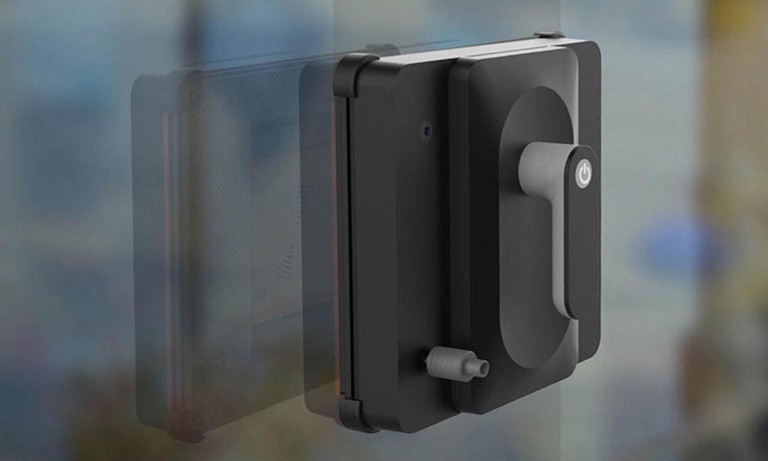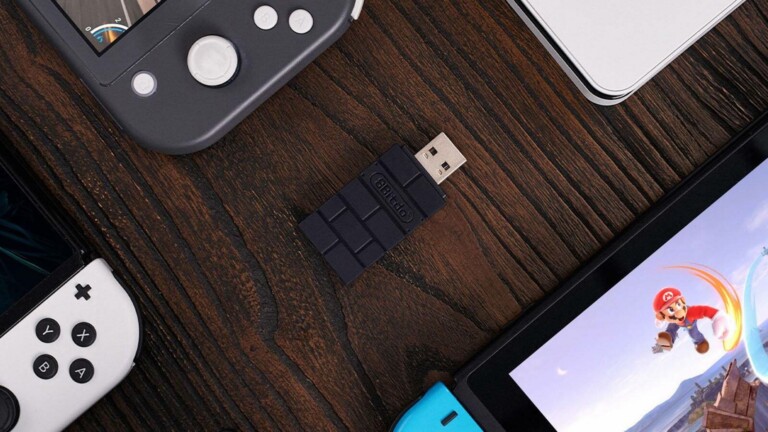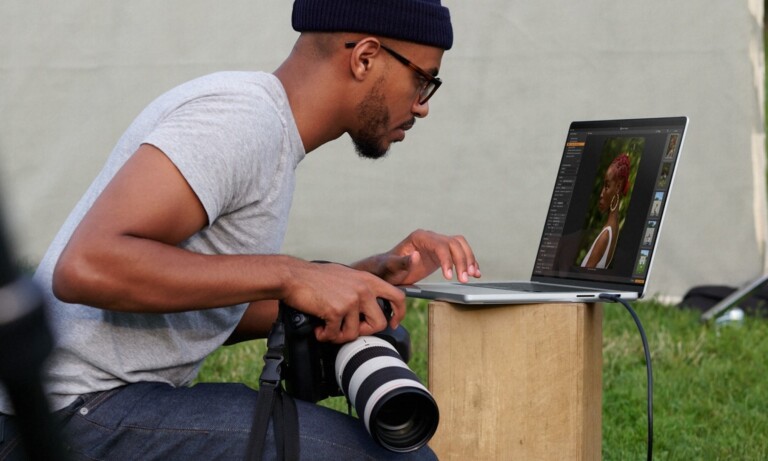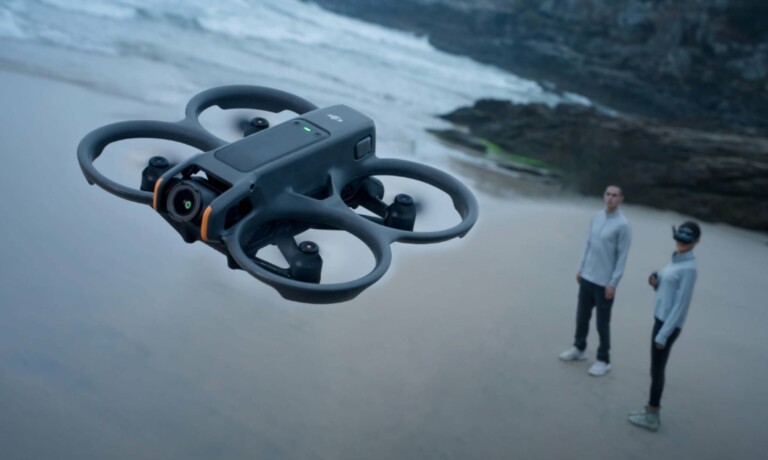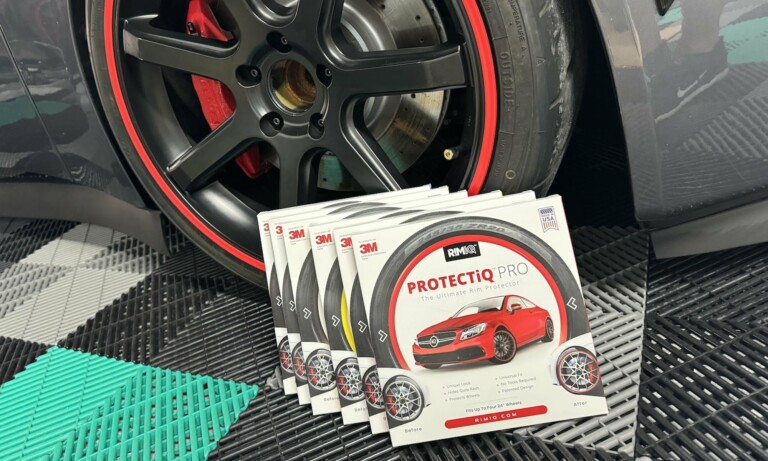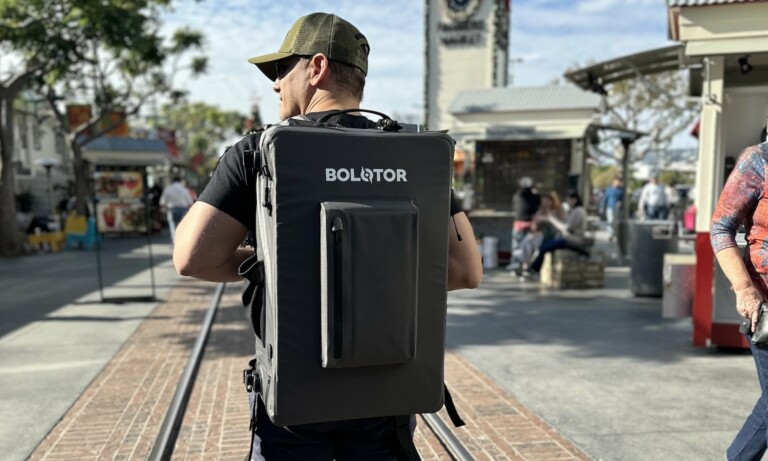Gadget Flow Podcast Episode 5 – George Manley talks about drop-shipping, entrepreneurship, and his journey
On this episode, George Manley, Vice President of Brand Development at RevCascade/Souler.com, dives into how he got to where he is today and why he would make the same mistakes if he could do it all again.

- For more information on George Manley, check out his LinkedIn profile.
- RevCascade helps retailers operate and scale their online marketplaces, automating all aspects of their drop-ship programs. You can manage and track your vendors’ product data, inventory, and transactions all in one place.
Could you give a bit of background into who you are?
George: I was going back to college to study journalism at the University of Maryland. I graduated from their college of journalism in 2000. After a couple of quick stints in journalism working at ABC News in Washington DC with 20/20, I worked with WTOP which is the all-news radio station in Washington, DC. I made my way to New York and in New York I was hoping to hook up with Katie Couric and become a page for NBC which is sort of their leadership training program. I found out it only makes $10 an hour and realized you can’t live in New York City doing that so, I made my way into sales. As soon as I got into sales I was working for a company named Cintas. It’s a great company. At the time they were the fifth largest apparel manufacturer in the United States. Most people don’t realize that. They’re a uniform company. They do cruise lines, they do Las Vegas casinos, Atlantic City casinos, they do restaurants, chef-ware, and just about every uniform you can think of. I worked for them for five years and really got an understanding of apparel manufacturing, loved it, I was the top salesperson in that company for three of the five years I was there within the division I was in. Then I ended up saying “Alright, if I like to sell clothes why don’t I start selling something that I’m really excited about”. So, I started applying to fashion jobs and I ended up being an executive in the fashion industry in New York for about eleven years. I ran Brooks Brothers wholesale sales. I ran sales for a bridal couturier called Priscilla of Boston. I was a consultant to the menswear industry for many years. I ended up running the Chelsea Market’s retail concourse floor and all of their sample sales and all the fun stuff that goes on there (in Chelsea). That led me to my current gig which is working for RevCascade, which is an online marketplace and platform for essentially linking up brands and retailers and allowing them to automate their drop-shipping experience.
Is your primary focus RevCascade?
George: I also own, with my fiancé, a company called Bucheimer NYC which is a leather goods brand. We’re growing that slowly. We bought it and developed it two years ago and we’ve got some great retailers that are buying those bags. We make all of our men’s products in New Jersey and our women’s stuff in Italy. We’re slowly building that business. Katlyn’s running those businesses as I focus on RevCascade and Souler, which is the direct-to-consumer .com side of RevCascade. The last piece of what we have, which is like many other people, we have a real-estate investment. We’ve got an Airbnb and VRBO property.
Could you describe drop-shipping?
George: Drop-shipping, in a nutshell, is any direct to consumer retailer. Typically, it’s their .com arm and is interested in selling as many goods as they can. Most stores only have so much real estate or square footage, so to speak, and they can only fit so many things in their store. It’s the same thing with their .com side as well. The e-commerce side of many retailers’ businesses is really just another store for them and they have a warehouse where they store that product and sometimes their omnichannel where they’ll pull product from their stores to fill e-commerce orders. In all of that, the store is the same. They only have so much square footage. Whether it’s their warehouse or their stores, they only have so much open to buy with which to purchase products to fill those two places. And so, drop-shipping came about primarily pioneered by Amazon. It’s about 60% of their overall business. It’s 100% of what Wayfair does. It’s 100% of what Farfetch does. Drop-shipping is listing products on your .com that you don’t actually own or take into your own warehouse. They’re shipping right from the manufacturer’s warehouse. So, you’re listing them on your website for sale. But when it sells on your website it’s being delivered by the brand directly out of their warehouse. Typically, the brands will take a little bit more of the sale than they otherwise would when you were buying it in a wholesale environment.

Gadget Flow Podcast Transcript for Episode 5
What would you teach your younger self about entrepreneurship?
George: To be honest with you, I would repeat a lot of the same mistakes and successes that I had. It was, sort of, throwing my head against the wall and working hard and taking some risk that allowed me to get to where I am. And by no means am I where I ultimately hope to be. I do feel much more informed and comfortable as an entrepreneur who’s got to sort of get up every day and make his paycheck. I don’t have an inbound salary from really any of the companies that I’m working with. That’s always been a motivator for being in sales, you’ve got to earn your paycheck but you also can earn as much as you work or as much as you succeed. It’s less what I would tell my younger self and more what I would say in general about being an entrepreneur and what I’ve found that’s been successful for me is just going at it. It’s just considering every opportunity and considering every conversation as a chance to move your concept or your product or your company forward and you never know who’s going to be able to help you. You never know who’s going to teach you some new lesson in your business or in the development of your company. So, I keep that message in the back of my head every day. I’m polite to everyone. I consider everybody a customer. I consider everybody an investor. I’m always working to get my message out there and improve my message.
Is there a risk that you took that stands out that changed the game?
George: Absolutely. The one that is on the tip of my tongue right now, I’ve got a lot of big ones, the one that I really want to talk about right this second is what I did last year. Literally, a year ago I was running around with TrailCross, which is the sales agency which I’ve owned for the last seven years. It was sort of always my LLC that sat on the side as I consulted for other people I would take money into that LLC. That’s where I would bring the initial sales of some of the goods that we were selling because we didn’t know if the concept would take off that deserved setting up a separate entity with licensing and all that goes with it, collecting sales tax, etc. There’s a lot of work with the initial setup of a new business. And so, last year I was running around as a consultant selling a couple of brands working on 100% commission. Basically, everything I sold I got a piece of that sale. In running around and selling to retailers like Nordstrom and Cabela’s and Neiman Marcus and Saks and Bloomingdale’s, I kept hearing the word “drop-ship.” They would say “yeah great, we’ll buy these four or five pieces but then, can you drop-ship the rest of the line?” And I would say “I think so. Let me find out.” I would go back to the brands and I would ask them and sure enough, a lot of them weren’t really set up for it or they didn’t know much about it. And so, it got me thinking. If I’m going to survive in the retail world, whether it’s fashion or outdoor goods or other things that I’ve sold in the past I’ve got to get on the e-commerce side of what’s going on. Because it’s the fastest growing form of retail in the world and I specifically have to learn more about drop-shipping because all these retailers keep asking me about it. I eventually, through calling a lot of people and finding out who I know that knows people that are either working within e-commerce or want to work in e-commerce and know a lot about it, met Josh Wexler who’s CEO of RevCascade and souler.com and I essentially pushed my way into his life. I think he would literally describe it as that. I told him I had a set of retailers that are very large that want to deal in a more significant way in the drop-ship world and I have relationships there and I could essentially introduce your product to them and make us both money. And at first, he was skeptical. He’s a startup so he didn’t really have the money to pay me and so I worked for him for free for six of the last twelve months and essentially proved my worth and I’m now on a full package with him. I’m an investor in the company and I’ve brought other investors to him who have invested and I really feel that I’m an integral piece of what’s going on there now. We’re a small team, we’re only twelve people, but it’s really exciting and I think what we have going on is really amazing. The team, particularly Josh, they’re some of the greatest people I’ve ever worked for.
Are there any resources for people to learn more about drop-shipping?
George: Drop-shipping is talked about almost every day somewhere out in the world of what’s going on. WWD, which is the trade publication for the fashion industry talks about it a lot. They had a full spread on the .com side of retail within fashion today in their publication. The question for so many people, including a lot of the retailers that I’ve been working with, is “how do we make drop-ship successful for us?” “How do we figure out a way to add more SKUs to our .com without adding a ton of overhead by trying to figure out how to make drop-ship work with our existing systems?” A lot of retailers out there today, one of the reasons why they can’t jump into the next generation of how people are buying things is because their systems are outdated and they have major investments in a lot of point of sales software and ERP software and their e-commerce platforms might be outdated and don’t necessarily work well with API linkups or whatever it might be. It’s a lot easier for young startup brands to initiate a connection to drop-ship than it is for a lot of these bigger, more traditional brick and mortar retailers because the easiest way to connect to drop-ship, especially with RevCascade and Souler, is to open a Shopify store because they’re already prebuilt to make it work. I don’t know of any general references to drop-ship out there. RevCascade does have a press page, or I should say a blog page that lists articles that are interesting about the drop-ship community. I would just tell people to Google it and learn as much as they can. Really, for that matter, any subject they’re interested in. Just become a master of your own destiny by learning as much as you can about it.
What is the worst advice you have been given or have heard being given to young entrepreneurs?
George: “Don’t quit your day job.” I think that, and actually it was most recently told to my fiancé who’s a brilliant salesperson and a brilliant person in general. She recently quit a job that she had been working at for seven years and she was very successful there. She was one of their top salespeople and made a lot of money. It’s hard to walk away from a comfortable job, no matter what the circumstances are. She had a six-figure package. It’s also hard to walk away from income that you’re happy receiving. She got a lot of advice from mostly older people that are used to the economy that we had sort of thirty years ago where you work for the same or maybe a couple of companies throughout your career and you build up a retirement and then you begin living your life and actually doing the things you want to do creatively when you’re sixty-five. And you don’t do it until then because if you quit your job up until that point you’re taking a big risk that might leave you homeless on the streets. I don’t believe that’s true. First of all, it’s not true in this day and age because there’s so much opportunity out there if you go and find it. I don’t even know that it was true then. I think you have to have the ability to take some risk in order to try anything entrepreneurial. The first step is just quitting that day job and getting out there and raising money or running around and learning more about your craft so you can create a business plan. Or going to work for somebody who’s a potential competitor in that industry so you can learn from the inside out.
What would you say is one or a couple of the greatest challenges that come with starting a successful business?
George: It’s definitely wearing multiple hats. As an entrepreneur, you’re almost always wearing more than one hat. You’re not just the executor and the CEO who’s dishing out the commands and then there’s a team of people who go out there and make things happen. You’re both the executor, you’re the manager doing the hiring and firing and the coaching and training and motivating. You’re the bookkeeper. You’re the salesperson and you’re the operations person. Some days you’re the cleaning person. You’ve got to just be willing to do anything. Whether it’s changing a lightbulb or pick up the trash in the office because the new client is coming in or make the big pitch. It’s wearing many hats and realizing that you probably have certain skills that are strong within those realms of roles. You obviously want to, ultimately, make your position within that new company you’re creating focused on your strengths. So, build an audience or a team around you that’s really strong at the things that you’re not good at and give them the freedom and the leeway and the trust to go make that part of your business successful for you as well.
What is the biggest piece of advice you could give someone 18 or 19 years old looking to start his or her first business and trying to become an entrepreneur?
George: If they’re 18 or 19 my advice would be a little different than it would to someone who is maybe a specialist in the industry they’ve been working in for a while and they realize that they’ve got a better idea than what’s currently out there and they want to jump ship and start their own company. To the 18 and 19-year-old, I would say, learn the way it’s done today for a few years before you try and create or develop your idea. It’s so much easier to raise money and to hire a team and to convince people that your idea is brilliant if you’ve got some background and you’ve got some experience and you’ve got a resumé that points to you doing that successfully as it’s set up today. Everybody, especially young people, thinks they know a lot more than the next guy. The reality is there’s a lot to learn in every industry and there’s probably ideas similar to yours already bubbling up through the existing companies in that industry. They may not be showing their head to the consumer yet but they might be in development. So, by you seeking out those businesses and applying and learning a little bit more about what your potential competitors are doing in the industry, and hopefully working there for a few years you’ll get a better idea of whether your idea is truly revolutionary or not. To the older person, the more tenured person that maybe already has that experience on their books, I would say “go for it.” Don’t let fear of jumping ship or taking a risk stop you from developing your idea. As Josh Wexler, who I mentioned before, the CEO of RevCascade once said to me: When you have an idea you’ve got to believe in it so much, almost to the point of being insane. You have to literally wake up every day and just believe in it so much that you’re willing to tell anybody who steps in front of you that it’s the greatest thing they’ve ever heard about. You’ve got to have that level of ambition around your idea to initially get it off the ground and begin building. The pieces that you need to make it a well-constructed and successful company. You have to be motivated and enjoy what you’re doing. You can’t just think it’s a good idea. You’ve got to literally want to see it through to the consumer loving it as well. You’ve just got to get up every day and want to get up every day and fight for it.
Where can people find you?
George: The easiest way is my LinkedIn page and I’m happy to share that URL with you and you can attach it to this recording. They can also go to souler.com, which is our direct to consumer website and I’m the head of sales for that business. They can find me through enquiring about Souler. Those are the two best ways for today. I have a blog as well called Manley’s Mission, manleysmission.com. It was a blog about the menswear industry. I’m going to start, hopefully, writing on it again soon. I haven’t touched it in years but most of my social media, including Instagram, is based around either my Manley’s Mission blog or Bucheimer NYC, our leather goods business.
For more such interesting podcasts on crowdfunding, marketing, product placement, and everything in between, subscribe to the Gadget Flow podcast now.
